
December 27th, 2002
It's All In The Details...
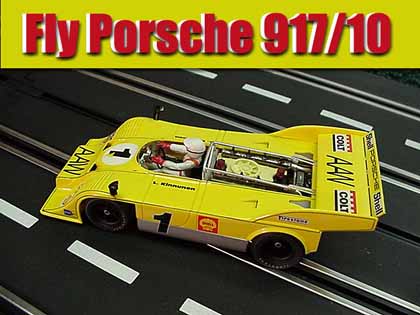
Earlier in the year Fly brought us the Porsche 917/10 Can-Am cars to the delight of many enthusiasts.
Employing a new design and loaded with detail, it arrived with mixed reviews. However, this car did run smoothly and has become a favorite for many modelers.
This version of the 917/10 was piloted by Leo Kinnunen to the 1972 Interserie Championship. Leo was very successful in this series, but his exploits later on in Formula 1 were not. For those that enjoy statistics, you can click here and you can review the season. Winning 6 out of 9 races, Leo certainly dominated in 72.
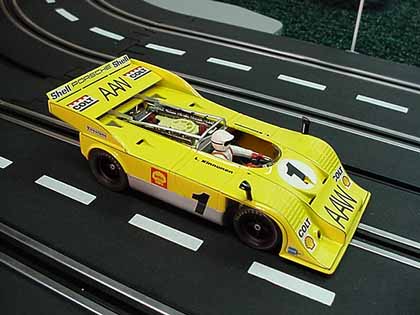
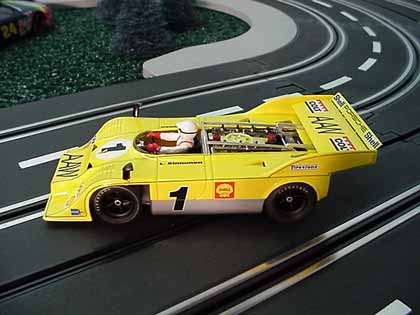
This model is mechanically identical to the prior releases of the 917/10, with only cosmetic changes to body as you can see. The engine detail that was hidden before is now in full view. The detail is incredible here and really makes this car stand out. One if the things in the overall finish that impressed me was that I found no dust or dirt under the clear-coat. I say this as Fly has had some recent issues with providing a dust free, even finish, so I was happy to find this model up to standard.
All the Tampo-Markings were clean and crisp with no noticeable fades or breaks in the colors. Body moldings and lines were crisp, however this model suffered slightly as its predecessors did with the top of the body not sitting flush with the chassis pan near the front. I must point out it was not as noticeable as the first releases, but still visible. With this said, after I took the car apart for the review, then re-assembled it, this gap disappeared.
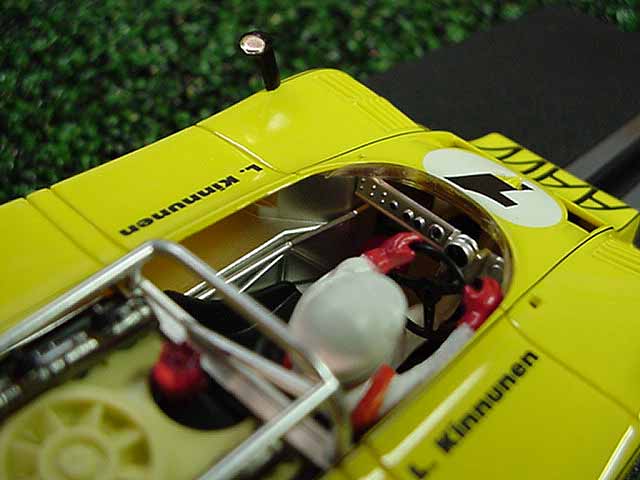
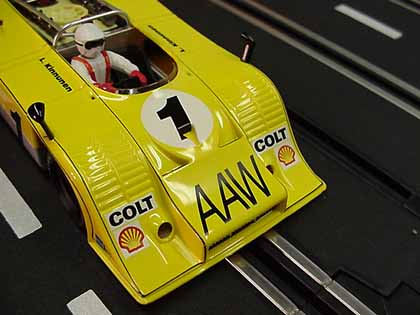
Certainly one feature that will draw some enthusiasts is the engine detail. Fly did a great job on the exposed power-plant, and I for one like the added realism it brings with it. A detailed interior is also present with a full driver figure, fire bottle and visible instrument panel.
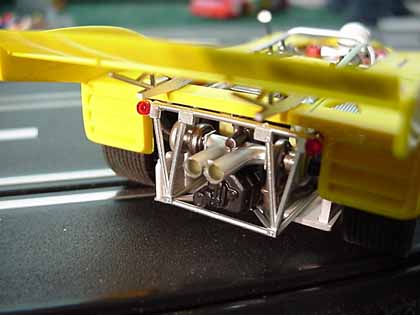
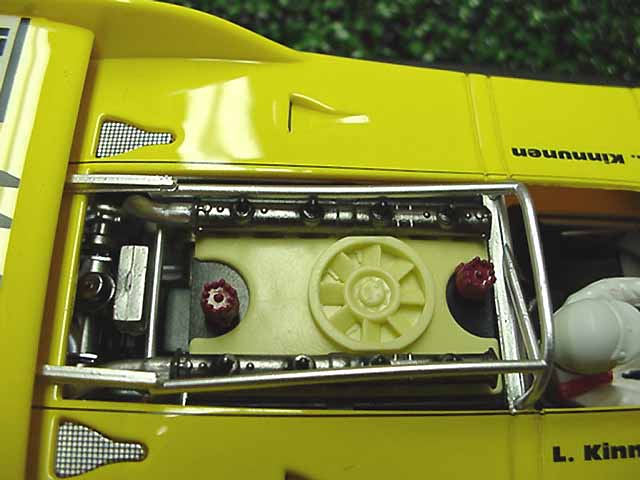
While all this detail is certainly eye-appealing, the question arises if all this added realism is really needed on a slot car. I for one will embrace as much scale detail as possible, as long as it does not "interfere" with the purpose of the model: To be placed on a slot car track and raced. Did Fly design this car to be raced? I think so, or why would they employ the design changes they did? Why include the B73 bar magnet at all?
With the Can-Am releases before it, most felt that any detail not seen when the model is assembled is simply a waste. However, on this model it can be viewed, but at what cost to you? Not so much as money, but more in time and labor. How does this detail interfere with the intended purpose?
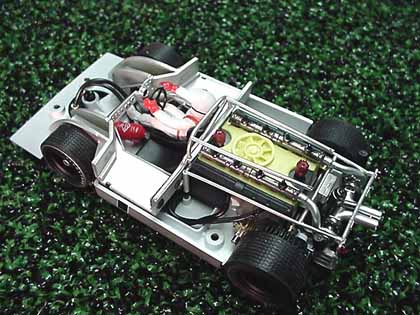
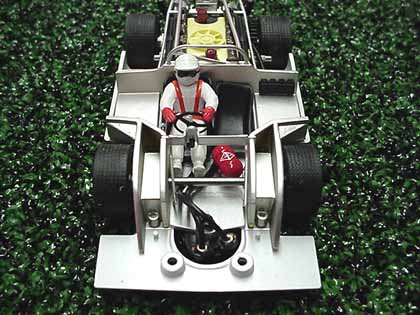
The problem is, to get to the running gear for routine maintenance and/or replacement, all this detail must be removed. After you remove the 4 screws that hold the body to the chassis, CAREFULLY begin removal. You will notice in the rear of the car on the engine, the wing brace rods are held by a hook connected to the motor cross brace. You must move the body forward slightly to release this from the brace.
Now, it is VERY hard to see, but on the space frame brace rods connected to the wing brace, there are small notches cut for them to fit snugly. When you re-assemble this car, keep this in mind. Next, you can remove the interior and then the rear exhaust detail. Again, take your time here as it can be tedious for some.
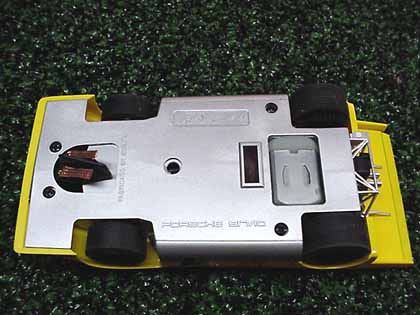
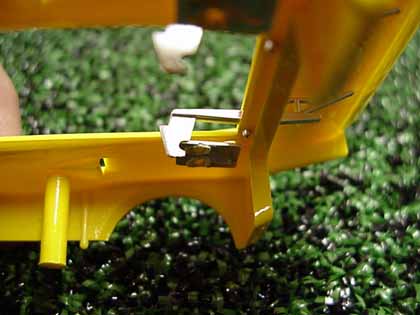
Time for the engine removal, and here is where you will break it (most likely). The front post for the engine, as seen in the photo, is cemented to the chassis and to remove it, you must move it back and forth until the post breaks. However, when you re-assemble the car you do not have to glue this back in place. It mounts securely and tightly without adhesive and all my test runs showed no signs of a rattle from it being loose.
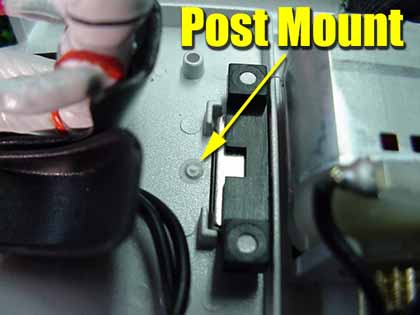
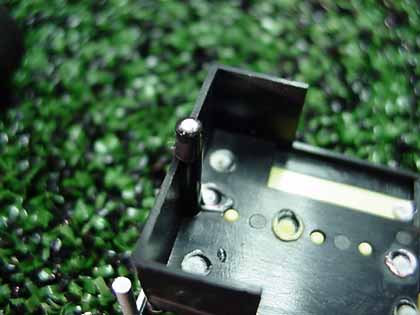
Finally you are complete. Visible now is the stock Mabuchi motor in its sidewinder drive configuration, the B73 bar magnet and wiring. It is here in the drive line that Fly gets high marks, for the old familiar side-to-side free-play as seen on most Fly Classics is all but gone. Gear mesh is clean and smooth with the rear axle held firmly in pace by brass bushings. I would suggest now that while the car is apart to oil these bushings, both ends of the motor where you can see the shaft, and a light drop on the gears.
Once you have re-assembled the car (or if you even bother to take it apart), you should be pleased with performance, at least in the areas of drive-line reliability and smoothness. Wheels and tires were surprisingly round and true, requiring minimal sanding, which aided this car a great deal in its initial test runs. This car is easily the smoothest Fly car I have driven since the Capri. Fans of weak magnets should be pleased as even with the strong magnet installed, it's distance from the rails negates most of its traction attributes.
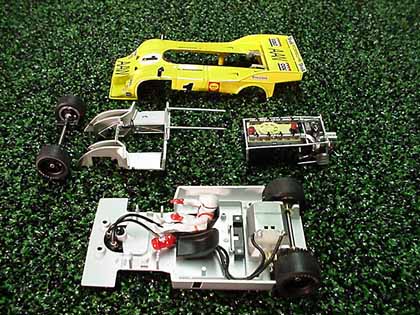
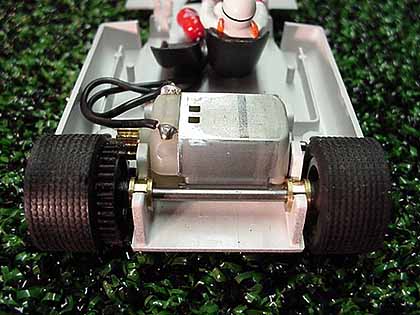
Driving this car was plenty of fun and provided a good challenge. Braking was light, yet I could manage to dive deeper in the corners with some practice. Acceleration was robust and smooth using the Parma Economy 45 ohm controllers. I tested the car with both 60 and 45 ohm, and preferred the 45 for an increased range in handling. Testing on Artin, Carrera and Scalextric Sport met with similar performance, with magnet traction attributes increased slightly on the Sport track.
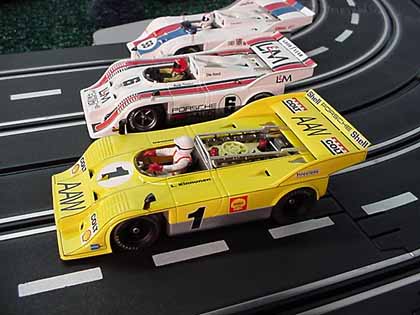 Overall
I liked this car, but I can't say it is for everyone. Models like this seem to
be a perfect match for the experienced enthusiast, and they should enjoy adding
this car to their collection.
Overall
I liked this car, but I can't say it is for everyone. Models like this seem to
be a perfect match for the experienced enthusiast, and they should enjoy adding
this car to their collection.
Did Fly go too far with this effort? Only you can answer that. It is still a good model, and I can only suggest you try one for yourself, as the driving experience itself provides a good challenge and plenty of fun.
Harry
As always, feel free to email me at wiseone@yhti.net about this article or just the hobby in general.
Or better still, drop into the Home Racing World Message Forum and let us know your thoughts.
A thanks goes to Slot Car World for providing me with this model.